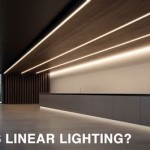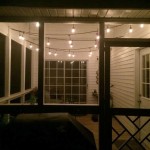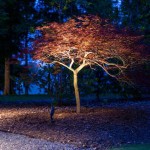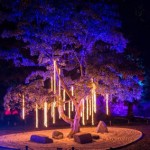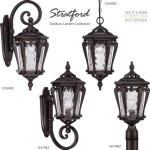Can You Plant Artificial Trees Outdoors?
Artificial trees offer a low-maintenance alternative to living greenery, providing consistent aesthetic appeal without the need for watering, pruning, or pest control. This raises the question: can these manufactured substitutes for nature be utilized in outdoor settings?
The answer is a resounding yes. Artificial trees are specifically designed to withstand the elements, making them suitable for outdoor placement. However, understanding the nuances of outdoor artificial tree use, including material selection, installation, and maintenance, is crucial for maximizing their lifespan and ensuring they continue to enhance outdoor spaces.
Material Considerations for Outdoor Artificial Trees
The durability of an artificial tree in an outdoor environment is directly related to the materials used in its construction. Manufacturers employ various materials, each with its own strengths and weaknesses regarding weather resistance.
Polyethylene (PE) is a popular choice for outdoor artificial trees due to its inherent durability and UV resistance. This plastic material can withstand temperature fluctuations, rain, and sunlight without significant degradation. Higher-quality PE trees often undergo UV treatment during manufacturing, further enhancing their resistance to fading and cracking caused by prolonged sun exposure.
Another material commonly used is polyvinyl chloride (PVC). While generally less expensive than PE, PVC offers good weather resistance, although it may be more susceptible to cracking in extreme cold. Choosing a PVC tree with UV protection is advisable for outdoor installations.
Metal, often used for the trunk and branches within the tree's structure, should be treated to prevent rust and corrosion. Look for galvanized or powder-coated metal components for enhanced weatherproofing.
Installation Best Practices for Outdoor Artificial Trees
Proper installation is crucial for ensuring the stability and longevity of outdoor artificial trees, especially in areas prone to wind. Several methods can be employed depending on the size and type of tree.
For smaller trees in pots or planters, weighting the container with rocks, sand, or concrete can provide sufficient stability. Larger trees, especially those planted directly into the ground, require more robust anchoring. This often involves digging a hole, placing the tree, and securing it with concrete or specialized anchoring systems designed for artificial trees.
If planting directly into the ground, ensure adequate drainage to prevent water accumulation around the base of the tree, which can lead to damage over time. Adding a layer of gravel or other porous material at the bottom of the planting hole can facilitate drainage.
When installing artificial trees near structures, consider prevailing wind patterns and potential impacts from falling branches or debris during storms. Maintaining a safe distance from buildings and power lines is essential.
Maintenance and Care for Outdoor Artificial Trees
While artificial trees require significantly less maintenance than their living counterparts, regular care can extend their lifespan and maintain their appearance.
Periodic cleaning is necessary to remove dust, pollen, and other debris that can accumulate on the foliage. Rinsing with a garden hose is often sufficient, but for stubborn dirt or grime, a mild soap solution can be used. Avoid harsh chemicals or abrasive cleaners, which may damage the materials.
Inspecting the tree for damage, such as loose branches or cracks in the material, is essential for preventative maintenance. Addressing minor issues promptly can prevent more significant problems down the line.
In areas with heavy snowfall, gently brushing accumulated snow off the branches can prevent breakage due to excess weight. For larger trees, professional assistance may be required for safe snow removal.
Protecting outdoor artificial trees from extreme weather conditions can also prolong their lifespan. While many are designed for year-round use, covering them during severe storms or prolonged periods of intense sun can minimize wear and tear.
By carefully considering the materials, installation process, and ongoing maintenance, individuals can successfully incorporate artificial trees into their outdoor spaces, enjoying the benefits of lush greenery without the demands of traditional landscaping.

Bespoke Artificial Trees Tailored Greenery For Your Vision

Commercial Artificial Plants Elevating Business Spaces

Artificial Outdoor Trees Fake Faux Commercial Silk

7 Things To Consider Before Outdoor Artificial Trees Eden

Outdoorliving Artificial Banyan Decorative Plant With Pot Fake Tree For Indoor Outdoor

Nearly Natural 6 Ft Artificial Oak Tree Uv Resistant Indoor Outdoor T2039 The Home Depot

Nearly Natural 6 Cycas Artificial Tree Uv Resistant Indoor Outdoor Com

Vintage Home 88 8 In Tall Palm Tree Artificial Indoor Outdoor Lifelike Faux 12 Brown Wood Like Fiberstone Planter Vhx124202 The Depot

Nature Spring Artificial Indoor Outdoor Potted Tropical Palm Tree 5 Target

Nearly Natural 6 Cycas Artificial Tree Uv Resistant Indoor Outdoor Com
Related Posts
